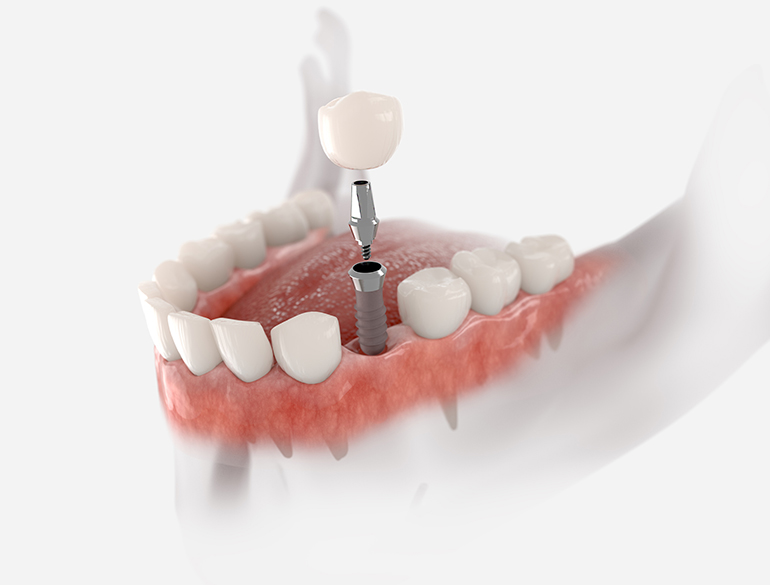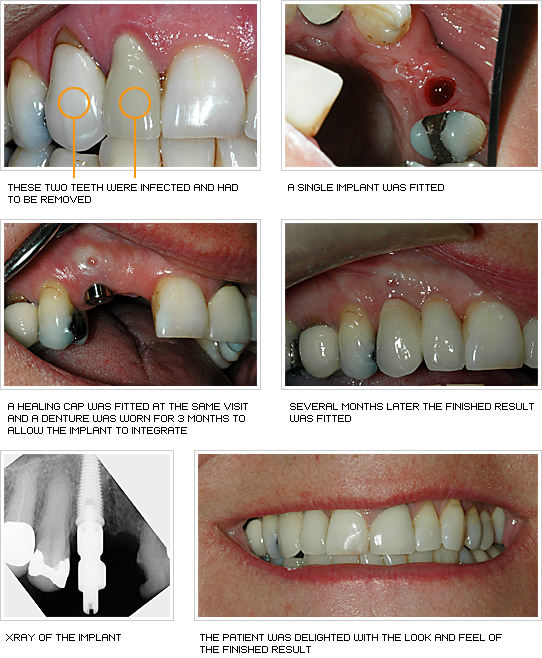Facts About Dental Sense Uncovered
Table of ContentsThe Facts About Dental Sense UncoveredThe Basic Principles Of Dental Sense Some Of Dental SenseDental Sense Things To Know Before You Get This
are medical gadgets operatively dental implanted right into the jaw to recover an individual's capacity to eat or their appearance. They supply assistance for man-made (phony) teeth, such as crowns, bridges, or dentures. When a tooth is lost due to injury or disease, an individual can experience difficulties such as rapid bone loss, faulty speech, or adjustments to chewing patterns that cause discomfort.Oral implant systems include a dental implant body and dental implant joint and might also include an abutment addiction screw. Wisdom tooth cavity. The dental implant body is surgically inserted in the jawbone in location of the tooth's root. The dental implant joint is typically connected to the implant body by the joint fixation screw and extends via gums right into the mouth to support the affixed artificial teeth
Smoking cigarettes might influence the healing process and decrease the long-lasting success of the implant. The healing process for the dental implant body may take several months or longer, during which time you typically have a short-lived abutment instead of the tooth. the oral implant procedure: Thoroughly adhere to the oral hygiene instructions given to you by your dental supplier.
Getting The Dental Sense To Work
Implant failure can cause the demand for another operation to take care of or replace the dental implant system. Restores the ability to chew Recovers aesthetic look Aids keep the jawbone from diminishing as a result of bone loss Preserves the health of the bordering bone and gums Helps keep adjacent (neighboring) teeth secure Enhances top quality of life Damages to surrounding natural teeth throughout implant placement Injury to the surrounding cells throughout surgical treatment, such as sinus opening Injury during surgical procedure (for instance, crack of surrounding jawbone) Poor feature, such as seeming like the teeth do not attack together typically A sensation that the tooth is loosened or twisting in place arising from an abutment screw loosening Implant body failure (looseness of the implant body) as a result of systemic infection, which may be more probable in patients with unchecked diabetics issues due to regional infection in bone and gum tissues sustaining the dental implant body due to postponed healing, which may be more probable in clients who smoke Problem cleaning up the gums around the dental implant, leading to inadequate dental hygiene Unattended periodontal condition Post-surgical tingling due to nerve impingement or damage Always alert healthcare suppliers and imaging technicians that you have oral implants prior to any kind of magnetic vibration imaging (MRI) or x-ray treatments.
FDA is not knowledgeable about any type of adverse events reported for MRI or x-ray treatments with dental implants. Oral implants systems are commonly made of materials that comply with worldwide consensus standards of the International Organization for Standardization (ISO) or official source ASTM International. These requirements have details of what makes a secure material.

A dental implant is a structure that changes a missing tooth. With screw-like devices, the surgeon inserts a dental implant right into the jawbone, and it works as a support for a man-made tooth, called a crown. A device called an abutment links the fabricated tooth to the oral implant. The crown is custom-made to fit the individual's mouth and match the shade of their teeth.
Dental Sense for Dummies
Some individuals are not qualified for dental implant surgery. It is for oral cosmetic surgeons to operate on people with: intense illnessuncontrollable metabolic diseasebone or soft cells disease or infectionIf these problems are settled, an individual can have the surgery. In, dental surgeons avoid operating individuals with: If people with any of the above go through dental implant surgical treatment, there is a greater danger of the implant falling short.

Oral implant surgical procedure is a personalized procedure. Provide you time to recover. Attach the message and final crown, bridge or denture.
Next off, your surgeon will carefully position the dental implant right into your jaw. Your specialist will rearrange your periodontals and shut the cut with stitches. If your dental implant is near the front of your mouth, your dental professional will certainly make a momentary tooth for you to use till you recover. This way, you won't have a gap in your smile while you recover.
3 Easy Facts About Dental Sense Explained
During the healing phase, your jawbone needs to fuse to the oral implant. This procedure can take anywhere from 3 to nine months.
When your dental implant heals, your dentist can attach the joint (small adapter article) and your final remediation (crown, bridge or denture). This typically takes about one hour to complete and might require a second small surgical procedure. You shouldn't feel any kind of discomfort throughout your dental implant treatment because your service provider will utilize medication to numb your gum tissues.
Comments on “The Greatest Guide To Dental Sense”